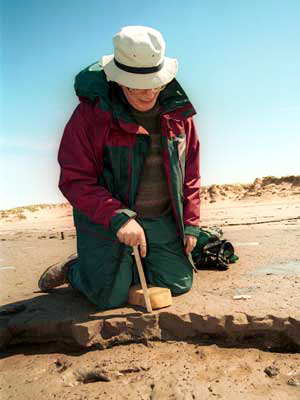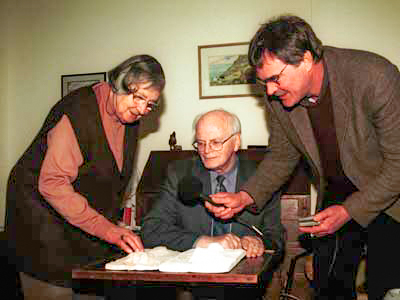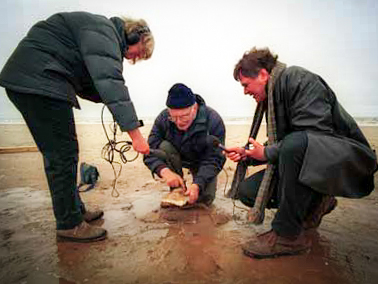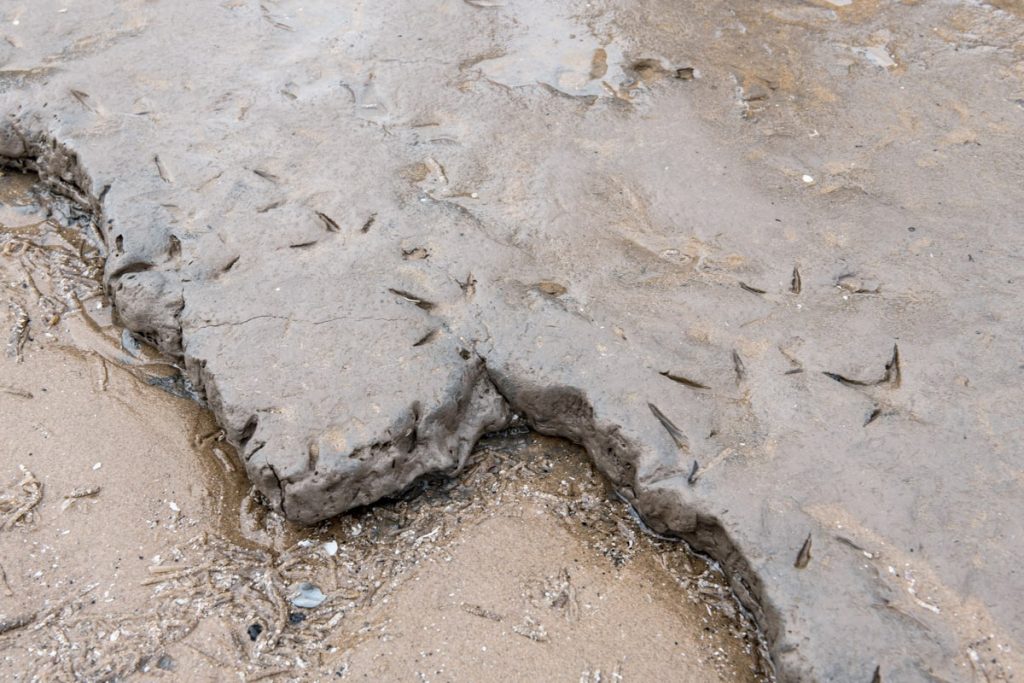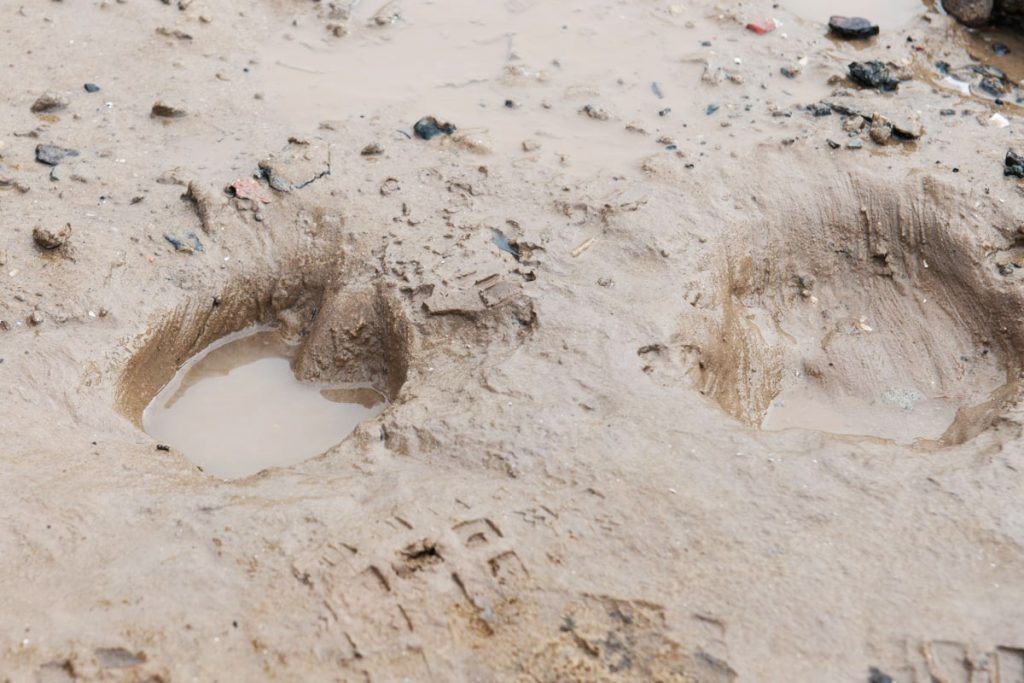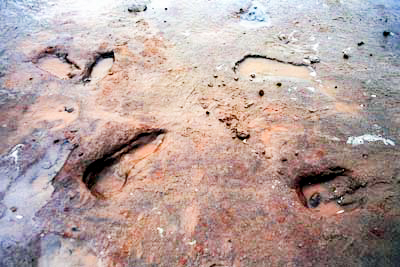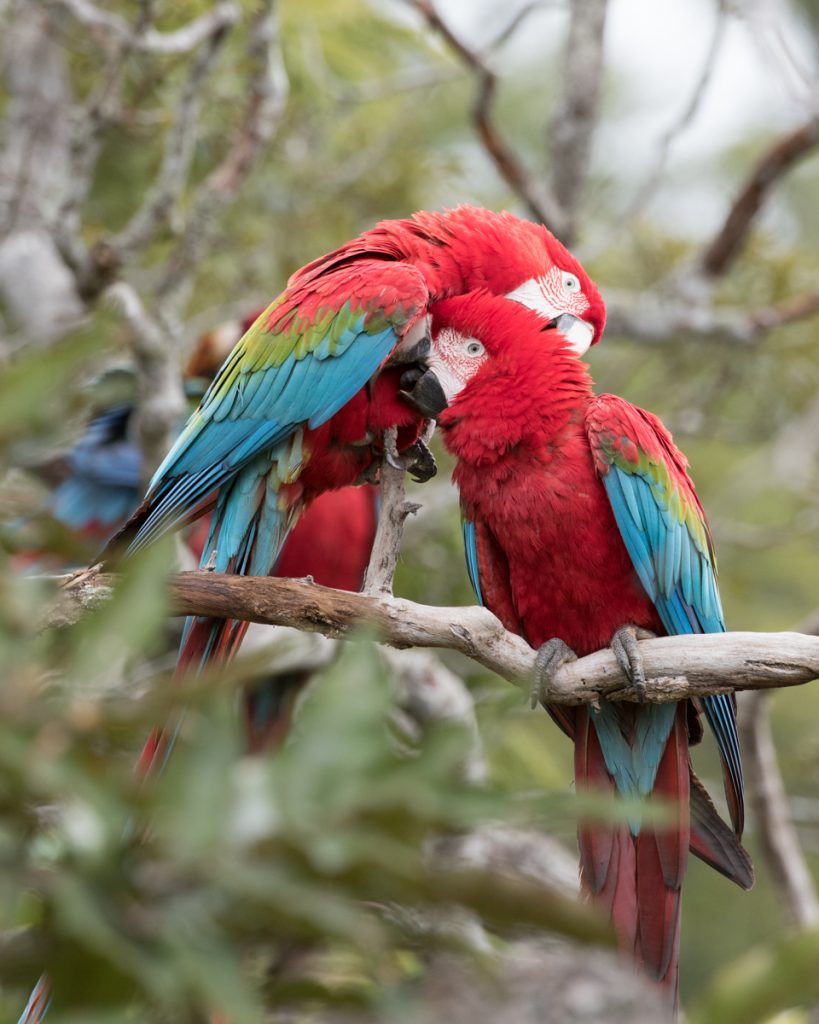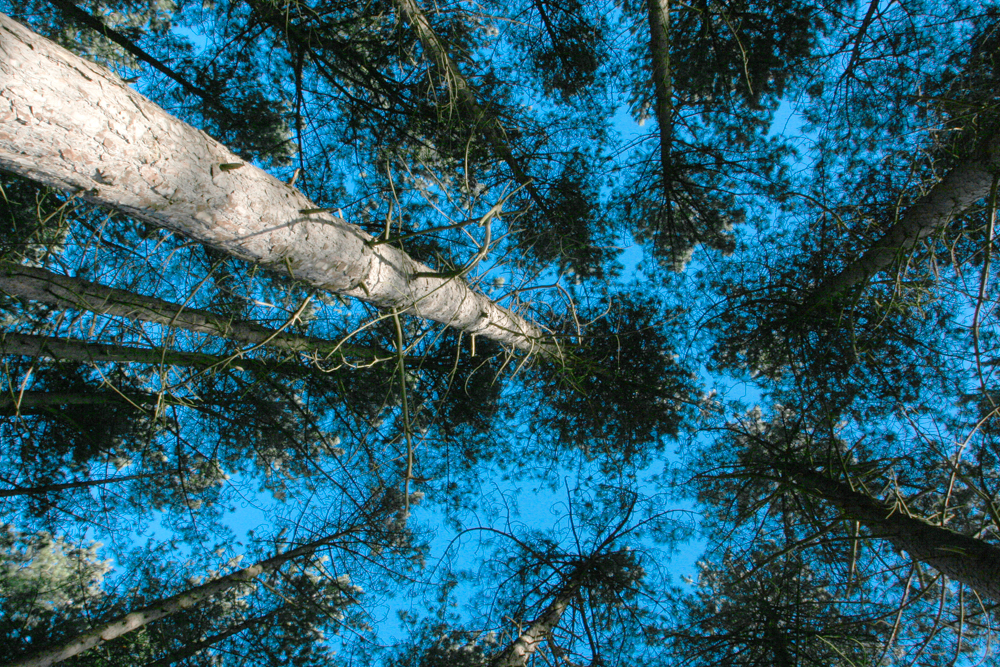It is rare anywhere in the world for us to be able to glimpse our ancestors lives from 7000 years ago in an intimate and personal way as it is on the Formby beach. The ancient human footsteps at Formby Point allow us to touch where our ancestors walked, calculate their height, study what animals shared their landscape and allow us to contemplate on their daily lives and routines. How different where they really from us in our modern world?
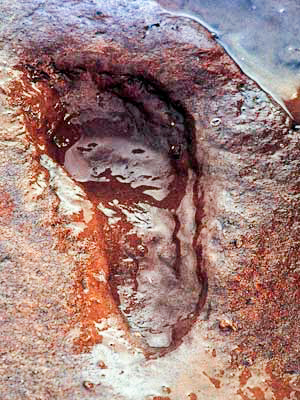
An ancient human footprints at Formby Point from 7000 years ago
7000 years ago people hunted and foraged for food around the Formby area of Merseyside in the UK, which had a very different landscape than today. At the end of the last ice age (the Devonian period), around 10,000 years ago the ice melted from glaciers releasing huge amounts of water and debris, which flowed down the river Mersey into the sea. As the river met the sea, the water slowed causing the debris and sediment to be deposited forming a barrier (a moraine) along the coastline past the Formby area, separating the sea and land. This barrier allowed a freshwater floodplain to be formed which flooded annually with silt rich waters. The freshwater mudflats or shallow lagoon depending on the time of the year would have been very biologically rich with lots of plants, birds and mammals. A perfect place to hunt and forage.

Sand from the nearby beach regularly blew across the mud flats which acted as a dividing strip for the next years flood, a little like the jam layer in the middle of a Victoria sponge and this meant the annual layers of silt never merged into one. Because the layers never merged we are left today with annual layers of silt a little like growth rings of a tree with different messages printed into each layer. It is through the footprints in Formby that we can estimate when people returned to the area after the last ice age. No one knows how many layers of foot print sediment are left and how long before they will be completely eroded away. Perhaps if you are interested in seeing the footprints you should visit sooner rather than later.
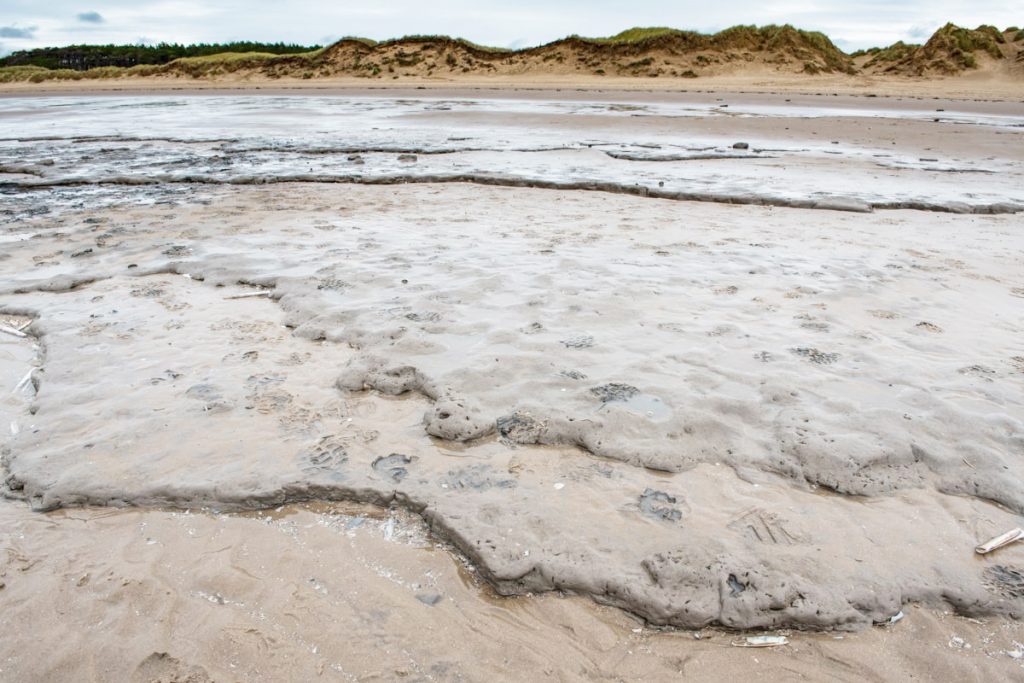
Fast forward too the present day and we can see the different layers of sediments with footprints from the past, a time capsule allowing us to briefly glimpse them before the tides erode them and exposes new layers beneath. Each year we see a new insight into our ancestors lives and each year they disappear completely, reminding us of a former way of life, the ephemeral nature of time and the fragile world we live on. The footprints were known to be old because it was seen time and time again the exposed footprints would disappear under a different layer of sediment and when the sediment was peeled away the footsteps could be followed beneath. So it was known the footprints were old, but how old? Carbon dating of material collected from one of the layers concluded a date of 7,000 years ago.
The first foot prints to be discovered were cattle hoofs in 1985, very little was known about them at the time as no research was being done. We now know the cattle prints where that of the extinct Auroch, a breed of wild cattle that once roamed across Europe and Asia. A local school teacher Gordon Roberts saw his first prints in 1989 and made the decision to start recording the footprints by photographing them and analysing his findings. Human footprints, deer and bird prints also started to appear on a regular basis and wolf prints from time to time. The information that was built up by Gordon created a microcosm of life in the area at the time allowing a unique insight into the past.
Gordon spent a further twenty five years walking the beaches of Formby with his dog Kim, searching for and recording new prints to make a long term study. His study has been greatly valued by local universities and historical groups alike ever since and a copy of his booklet is still available from the Formby civic society. It is with great sadness that Gordon passed away in 2016, his story lives on and his efforts to bring attention to the footprints have fascinated school children and adults alike for nearly three decades.
One of the most common footprints found at Formby is that of the extinct Auroch, the largest wild cattle species to have existed in Europe. The Last Auroch died in Poland in 1627 in the Jaktorow forest, it is thought they became extinct mainly due to overhunting and disease from domesticated cattle. The pressure of humans on the natural environment unfortunately has only become worse since and we are loosing species at a very alarming rate. One of the saddest cases this year was the loss of the last male northern white rhino. Please read my article on Sketch for Survival, a project by Explorers Against Extinction who are doing great work creating a community of passionate people to end all extinctions, this year they are working to help save the Sumatran tiger and the elephants of the Garamba national park in the Democratic Republic of the Congo. They are doing very amazing work for such a small team, there work should be commended please take the time to have a look at their website here.
If you plan to visit the beach for the footprints at Formby also consider exploring the beautiful woodland at there with its population of red squirrels. The Anthony Gormley statues further down the coast at Crosby are also a great experience, the avid walker you can walk there it is approximately 7.5 miles each way. For the rest of us, drive to Crosby and enjoy the exhibition on the beach with views over Liverpool and beyond.


